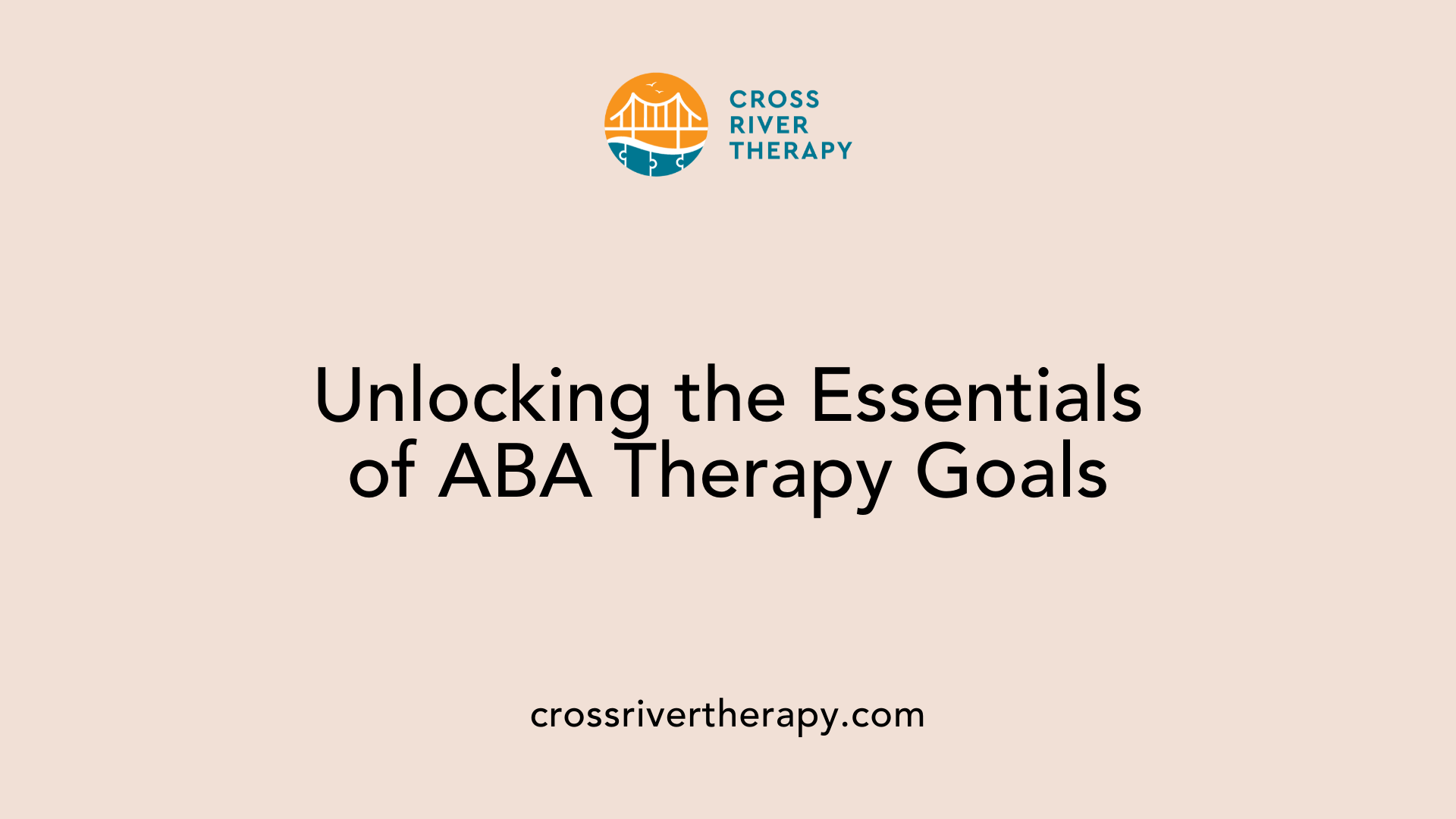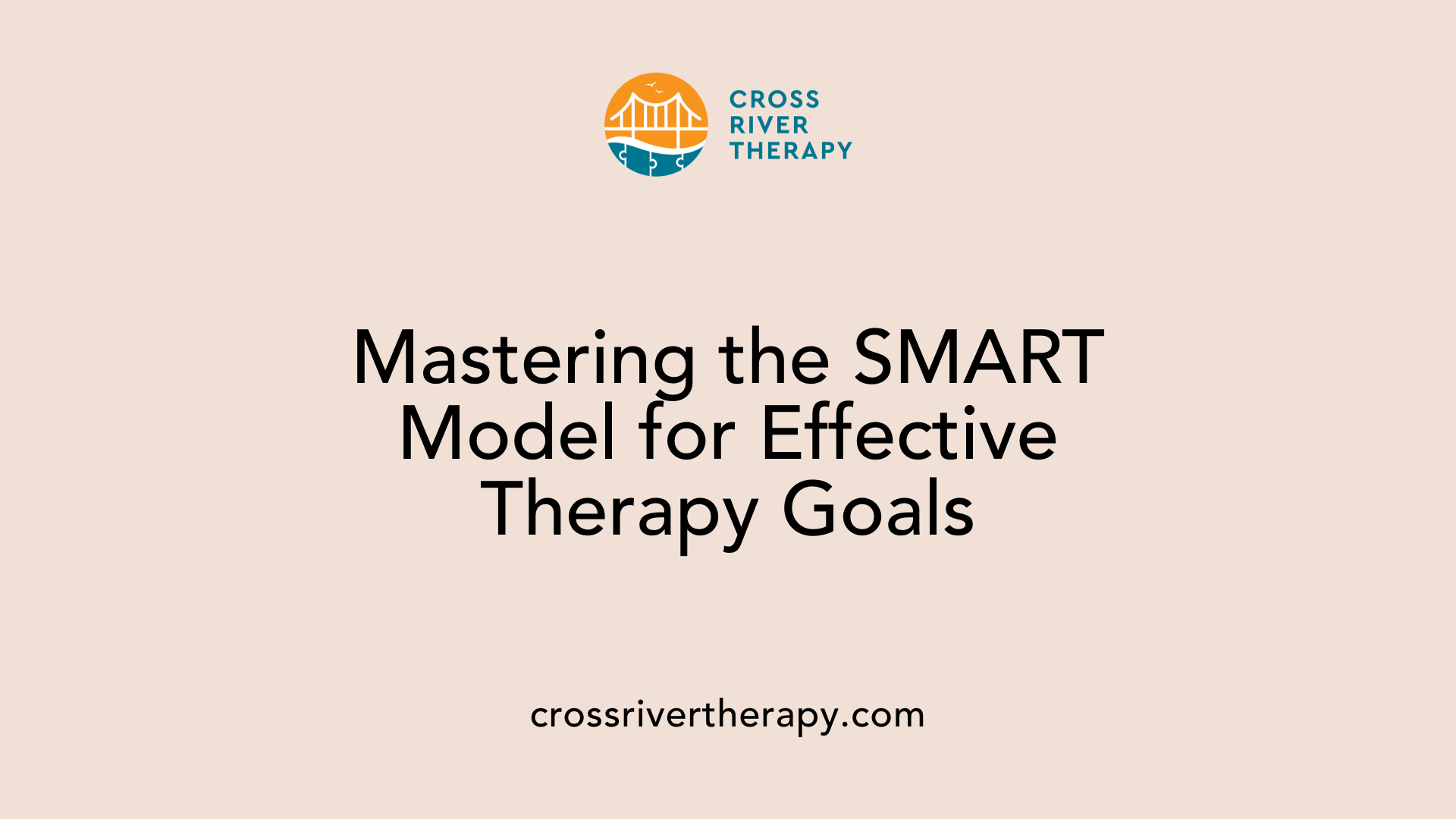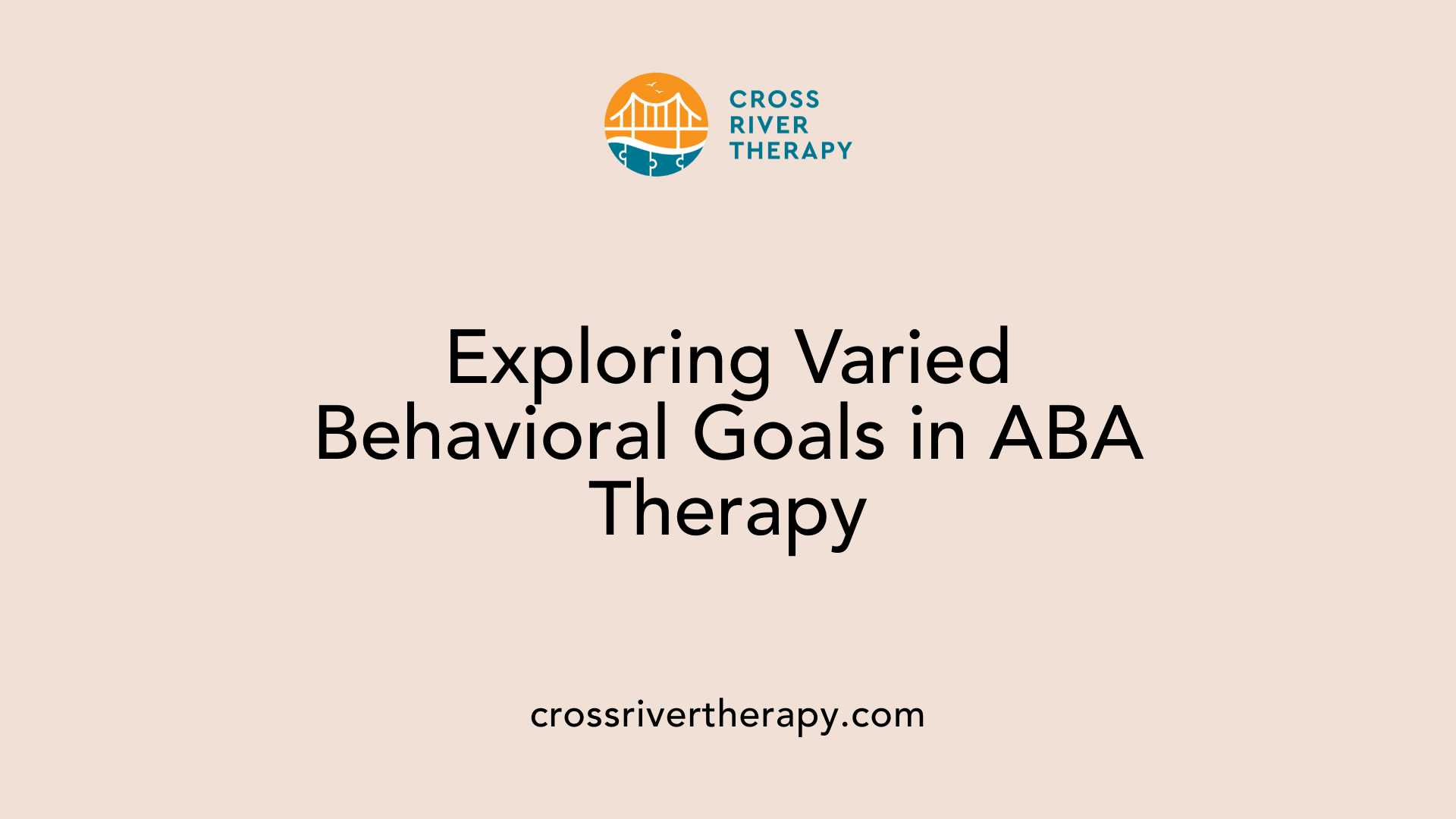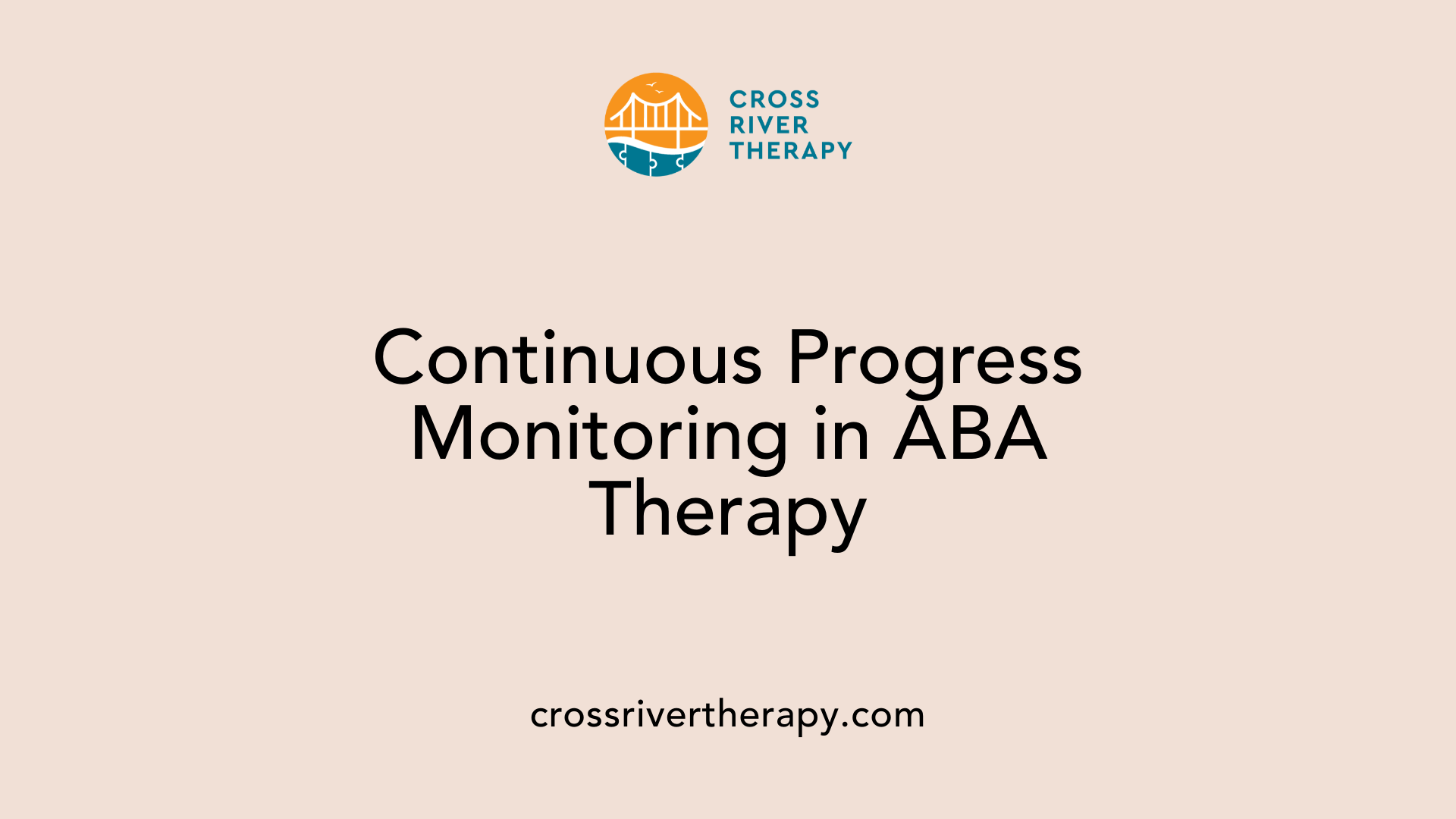Creating ABA Therapy Goals
Crafting Meaningful ABA Therapy Goals
Introduction to ABA Goal-Setting
Applied Behavior Analysis (ABA) therapy is a well-established approach to aiding individuals with autism in developing essential skills across various domains. At the core of ABA therapy is the creation of specific, measurable goals that guide the therapeutic process. These goals are not only tailored to the individual's unique needs and developmental stage but also involve the collaborative input of therapists, caregivers, and often the individuals themselves. In this article, we will explore the intricacies of developing effective ABA therapy goals, the importance of the SMART criteria, examples of goal types, and the impact of collaborative goal-setting.
Understanding the Objectives of ABA Therapy

What are the goals of ABA therapy?
The goals of ABA therapy are multifaceted and primarily aim to increase helpful behaviors while decreasing harmful ones. This includes improving language and communication skills, social skills, attention, focus, memory, and academic performance while also targeting specific problem behaviors for reduction.
Each ABA program is tailored to the individual's unique needs, interests, and family situation, ensuring that treatment goals are relevant and meaningful. A crucial strategy of ABA is positive reinforcement, which encourages the repetition of desirable behaviors.
Overall, ABA therapy seeks to enhance the quality of life for individuals, particularly those with autism, by equipping them with essential skills and healthier behavioral responses.
Improving communication, social, and academic skills
Goals in ABA therapy address a variety of skills that are vital for daily life and social interaction. For communication, goals may focus on both expressive and receptive skills, helping children use complex phrases, follow directions, and listen effectively.
Social skills targets include engaging in activities like sharing and taking turns, enabling better peer interactions. Additionally, academic skills, such as problem-solving and language comprehension, are key components of individual treatment plans.
Individualized treatment plans
The development of individualized treatment plans is essential in ABA therapy. This process involves collaboration between caregivers, Board Certified Behavior Analysts (BCBAs), and the child to create specific, measurable goals that meet the child's unique challenges and strengths.
Goals should follow the SMART criteria—Specific, Measurable, Achievable, Relevant, and Time-bound—allowing for clear tracking of progress. By customizing therapy, ABA ensures that objectives are meaningful and aligned with each child's developmental needs.
Achieving SMART Goals in ABA Therapy

SMART Criteria in ABA
Setting goals in ABA therapy employs the SMART criteria, ensuring they are Specific, Measurable, Attainable, Relevant, and Time-bound. For instance, a well-defined goal could be:
- Specific: Clearly outline the expected behavior.
- Measurable: Quantify the goal for tracking purposes.
- Attainable: Assess the child’s current skills to set achievable goals.
- Relevant: Align the goal with the child’s developmental level and needs.
- Time-bound: Establish a timeline for when the goal should be met.
Importance of Measurable Goals
Measurable goals act as the backbone of ABA therapy by allowing caregivers and therapists to monitor progress effectively. By defining criteria for each objective, caregivers can observe changes over time, making it easier to adjust strategies when needed. Measurable indicators can include behavior frequency, communication attempts, or social interactions, all of which provide concrete data on the child's development.
Tracking Progress Effectively
Tracking progress in ABA is critical for ensuring the therapy is working as intended. Regular assessments and reflections help modify goals based on shifting needs and accomplishments. A specific example of a SMART goal is:
"By the end of the school year, the student will engage in reciprocal conversations by taking turns and asking relevant questions with peers at least three times per week." This goal is effective because it highlights how progress can be tracked across a designated timeframe while outlining the necessary skills to be developed.
| Goal Component | Definition | Example |
|---|---|---|
| Specific | Clearly defines behavior | Increase use of two-word phrases for requests. |
| Measurable | Trackable frequency | Use two-word phrases at least five times in a session. |
| Attainable | Realistic based on abilities | Achievable by practicing in familiar settings. |
| Relevant | Aligns with child's needs | Supports social interaction and communication development. |
| Time-bound | Set a deadline | Achieve this skill by the end of the therapy cycle. |
By adopting the SMART model, ABA therapy can create a structured approach to achieving significant improvements in communication and social skills for children with autism.
Effective Strategies for Writing ABA Therapy Goals

How can I write effective ABA goals?
To write effective ABA goals, it is crucial to follow the SMART criteria: Specific, Measurable, Achievable, Relevant, and Time-bound. Start by clearly defining the target behavior, specifying the context in which it should occur for more precise outcomes. For instance, instead of a vague goal like "improve communication," define it as "the child will use two consecutive words to request items in a structured play setting."
Using baseline data is essential for setting a targeted measure of success. This information offers a snapshot of the child’s current abilities, allowing you to establish realistic yet challenging goals that reflect meaningful progress. Engage relevant stakeholders in the goal-setting process, such as parents, educators, and other professionals. Their insights ensure that the goals are pertinent to the child’s individual needs, enabling a more personalized approach.
Engaging key stakeholders in goal-setting
Collaboration is a vital element in effective ABA goal writing. Involving stakeholders—like Board Certified Behavior Analysts (BCBAs), registered behavior technicians (RBTs), parents, and educators—creates a comprehensive support system around the goals. This diverse input helps tailor the objectives to enhance the child's capabilities in various settings, such as home and school. Regular meetings and discussions serve to align all parties on progress and encourage a consistent approach.
Adjusting goals based on progress
Regular reviews are essential to maintain the effectiveness of ABA therapy goals. Schedule consistent assessments to monitor progress, adapting goals as necessary based on the child’s development. This dynamic adjustment process ensures that goals remain ambitious yet attainable, fostering continuous motivation and growth. For instance, if a goal to follow two-step directions is met consistently, the next goal could extend to three-step directions, promoting ongoing skill enhancement.
By maintaining flexibility and collaboration, ABA therapy can optimally support children's growth in communication, social skills, and daily living tasks.
Diverse Types of Behavioral Goals in ABA Therapy

What Are Examples of Behavioral Goals in ABA Therapy?
Examples of behavioral goals in ABA therapy can encompass a wide range of skills and behaviors. One goal might be to reduce self-stimulatory behaviors, such as hand flapping or echolalia, in order to promote more functional communication. Another goal could involve increasing compliance with instructions, which helps the individual follow directions in various settings. Additionally, enhancing self-help skills, such as independent toileting, dressing, or feeding, promotes greater autonomy. Finally, decreasing aggressive behaviors towards others can improve social interactions and relationships, fostering a more positive environment.
Reducing Challenging Behaviors
In ABA therapy, a crucial focus is reducing challenging behaviors. This involves identifying specific behaviors that may hinder development or social interaction and creating strategies to address them. For instance, a goal could be to decrease tantrums during transitions or when demands are made, helping the child adapt better in various environments. By implementing techniques like positive reinforcement and structured routines, children can learn to manage their emotions and reactions more effectively.
Improving Functional Skills
Functional skills are vital for independence and daily life. Goals in this sphere may include improving daily living skills such as organization and hygiene, allowing children to become more self-sufficient. For instance, a measurable goal could be to teach a child how to dress themselves independently within a predetermined timeframe. Furthermore, enhancing communication abilities, like using two-word phrases to request items, supports broader social interactions and functional communication, which are essential in diverse settings.
| Goal Type | Example Goal | Focus Area |
|---|---|---|
| Behavioral Goal | Reduce self-stimulatory behaviors | Communication Skills |
| Compliance Goal | Increase compliance with verbal instructions | Instruction Following |
| Self-Help Goal | Enhance independent dressing skills | Daily Living Skills |
| Social Interaction Goal | Decrease aggressive behaviors towards peers | Social Development |
The establishment of these goals is integral to an effective ABA treatment plan, guiding the therapy towards successful outcomes.
Targeting Critical Skills through ABA Goals
Skills That Can Be Targeted in ABA
ABA therapy focuses on enhancing vital skills for children with autism, targeting areas that significantly impact their daily lives. Here are some critical skill areas:
- Communication Skills: This includes both expressive and receptive language skills, allowing children to effectively express themselves and understand others.
- Social Skills: Goals can encompass sharing, taking turns, and engaging appropriately with peers, fostering healthy interactions.
- Life Skills: Daily living skills, such as toileting, hygiene, and dressing, are essential for fostering independence and self-sufficiency.
Communication and Social Skills
ABA therapy places a strong emphasis on developing both communication and social abilities.
- Expressive Communication: Goals may include using complex language, improving conversational skills, or asking for help.
- Receptive Communication: Skills such as following directions, identifying objects, and listening attentively are prioritized.
- Social Interaction: Achieving goals in this area can lead to better friendships and peer relationships, addressing vital social engagement skills.
Life Skills and Independence
Life skills and fostering independence are paramount in ABA therapy. Goals tailored to promote independence may include:
- Daily Living Skills: Tasks like dressing independently and maintaining hygiene can enhance self-sufficiency.
- Community Skills: Preparing for real-world interactions, such as making purchases, can help ease transitions into broader social scenarios.
Focusing on these goals through structured, measurable interventions provides a clear path for improvement and success.
The Significance of Individualized ABA Goals
Importance of Tailoring Goals
Individualized ABA therapy goals are fundamental in ensuring effective treatment for children with autism. These goals are collaboratively developed by Board Certified Behavior Analysts (BCBAs) and caregivers, making them highly relevant to the child's unique strengths, challenges, and interests. By tailoring these objectives, therapists can create meaningful pathways for skill development.
Impact of Individualized Goal-Setting
The process of setting personalized goals enhances engagement and motivation. When children see their aspirations reflected in therapy, they are more likely to invest effort into achieving them. For example, goals can target daily living skills like dressing independently or communication milestones such as using two-word phrases. This customization not only boosts self-esteem but also paves the way for developing broader social and academic competencies.
Effective Treatment Outcomes
Using the SMART criteria (Specific, Measurable, Achievable, Relevant, Time-bound) in goal-setting improves treatment outcomes by providing a clear roadmap for progress. Regular reviews and adjustments ensure that each child's evolving needs are met, enhancing their independence and quality of life. Each milestone achieved in this structured environment fosters a sense of accomplishment, reinforcing positive behavior and dedication toward continual learning.
Monitoring and Adjusting ABA Goals for Progress

Continuous Monitoring
Monitoring progress in Applied Behavior Analysis (ABA) therapy is crucial to ensure that the goals set for each child remain relevant and effective. Regular assessments of the child’s skills and behaviors allow therapists to track advancements in areas such as communication, social skills, and daily living skills. This ongoing observation helps identify when a child is ready for new challenges or if they require additional support in a specific area.
Adjusting Goals to Fit Child's Development
As children with autism adapt and progress, their needs evolve. Therefore, it is essential to make adjustments to their ABA therapy goals. By reassessing and modifying objectives to align with the child’s current abilities, therapists can ensure that goals remain challenging yet achievable. This approach not only fosters motivation but also maximizes the effectiveness of the therapy.
Need for Regular Reviews
Regularly reviewing goals is integral to the success of ABA therapy. These reviews provide opportunities to celebrate milestones achieved, reinforcing positive behaviors and encouraging continued effort. Additionally, they facilitate discussions on any challenges the child may face, allowing for prompt intervention and support. A collaborative effort involving parents and therapists is vital during these reviews, ensuring that everyone is aligned and invested in the child's progress.
Collaborative Goal-Setting in ABA Therapy
Collaboration between Parents and Therapists
Collaborative goal-setting in ABA therapy is crucial for developing effective treatment plans. Parents, caregivers, and Board Certified Behavior Analysts (BCBAs) work closely to create goals that are not only meaningful but also tailored to the child’s unique strengths and challenges. This partnership ensures that everyone involved understands the objectives, promoting a shared commitment to the child’s success.
Role of Caregivers in Goal Development
Caregivers play a vital role in the goal-setting process. They provide essential insights regarding the child’s behaviors, preferences, and daily routines. By contributing their observations, caregivers help shape personalized goals—whether focusing on improving communication skills, enhancing social interactions, or fostering daily living skills. Their active involvement ensures that the goals are relevant and relatable for the child.
Building a Supportive Team
A strong foundational team enhances the success of ABA therapy. This team typically includes registered behavior technicians (RBTs), educators, and other specialists who bring diverse perspectives. Regular communication among team members helps maintain aligned goals and facilitates adjustments as the child progresses. By celebrating milestones together and addressing challenges collaboratively, the team fosters an environment of support and encouragement that is essential for effective learning.
| Key Component | Description | Importance |
|---|---|---|
| Collaboration | Involves teamwork among parents, BCBAs, and therapists | Ensures personalized goal setting |
| Caregiver Input | Caregivers provide insights on the child's needs | Helps tailor interventions effectively |
| Supportive Team | Consists of RBTs, educators, and specialists | Enhances therapy effectiveness and morale |
Long-term Success through Short-term Achievements
Setting Short-term and Long-term Goals
In ABA therapy, the establishment of both short-term and long-term goals is essential for meaningful progression. Short-term goals typically focus on immediate skills that the child can practice daily, such as learning to dress independently or communicate effectively using phrases. These goals serve as stepping stones toward the broader, long-term objectives aimed at greater independence and mastery in various life skills.
Importance of Celebrating Milestones
Celebrating milestones achieved within ABA therapy is vital. Recognizing these successes not only motivates the child and builds confidence but also reinforces positive behaviors. Each milestone serves as evidence of the child’s progress, fostering a sense of accomplishment for both the child and caregivers.
Incremental Progress in ABA
Incremental progress is a cornerstone of effective ABA therapy. By breaking down complex skills into smaller, manageable steps through methods like task analysis and chaining, children can experience success regularly. This approach allows for clear tracking of advancements, ensures that interventions remain relevant, and helps to maintain motivation throughout the therapeutic journey. Regular review and adjustment of goals based on the child’s evolving needs further enhance this structured learning process.
The Path Forward in ABA Therapy
Creating effective goals in ABA therapy is a thoughtful process that aims to foster meaningful progress in individuals with autism. By focusing on individualized, SMART goals and fostering a collaborative environment between therapists, caregivers, and individuals, ABA therapy can achieve significant improvements in communication, social skills, and overall quality of life. Regularly assessing and adjusting these goals ensures that therapy remains relevant and effective for the individual's evolving needs. As these goals are met and surpassed, they not only aid in daily living but also pave the way for long-term success and independence. With a structured approach to goal-setting and implementation, ABA therapy holds the potential to transform lives, one achievable milestone at a time.
References
- ABA Therapy Goals: 25 Practical Examples & Timelines
- ABA Therapy Goals: 30 Practical Examples & Timelines
- Guide to ABA Therapy, Goals and Objectives - Acorn Health
- Examples of Goals to Address in ABA (Applied Behavior Analysis)
- How to Set Realistic Goals in ABA Therapy
- How to Set ABA Goals: Timeframe and Examples | Support Plans
- Setting Realistic ABA Goals That Work



